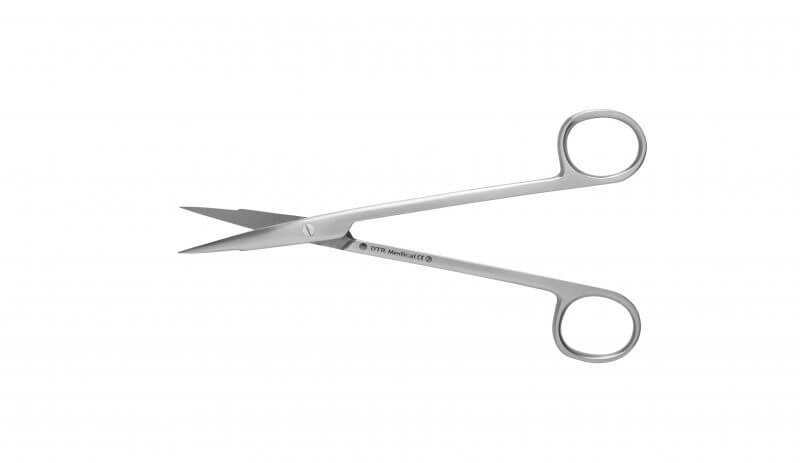News » Company News » Why settle for scissors that don’t cut?
Why settle for scissors that don’t cut?
Archive

Scissors are a ubiquitous instrument, used throughout healthcare. Consequently they are available in many patterns and sizes to suit the purpose. Unfortunately they also come in varying standards of quality which has a direct impact on services.
Stick to Re-usable; Tried and Tested.
The traditional UK or German produced pair of scissors that are set properly by craftsmen remain the ideal. They represent good value for money as they last for years provided they are well maintained. In the course of repeated reprocessing, the joints require lubricating and the blades will need sharpening. Sometimes when the tips are damaged they need replacing completely.
According to a leading UK based re-useable scissors manufacturer, “Our scissors are an investment that will last for years providing they are well maintained. The correct way to re-sharpen scissors involves re-setting the blades again. Simply grinding the edge of the blades is a poor alternative that limits the effective life of the instrument.”
The time to re-set and sharpen is difficult to determine because this depends on the quality of the original instrument and previous repairs. Managed correctly repair costs can be a significant budget item, and the alternative is more frequent capital replacement.
High quality re-usable scissors manufacturers have recognised this and have added titanium blades or super cut edges to improve the useful life. However these are more expensive and the extra cost has to balance with the improved achieved lifespan.
Try the Alternative; Single-use?
In response to these difficulties, it is understandable that there has been a rapid rise of single-use scissors. A large proportion are sold in conjunction with other instruments in a variety of customised sets, most commonly suture packs, designed to provide efficiencies for many procedures.
In these cases the intention is always to provide the best quality scissors as specified in the contract. Healthcare providers attempt to define quality, especially of suture packs, by differentiating these into “silver, gold or platinum” standards. In theory, these labels identify the different need of users: A ward nurse cutting dressings may only need simple plastic handled scissors, whilst a maxillofacial surgeon requires something more delicate for fine work around the face.
In practice, most packs are sold for the lowest price and this means the scissors are often the weakest link. Repeated samples provided to DTR Medical by disgruntled users demonstrate some of these issues. It is common for there to be gaps between the blades meaning they cut effectively only at one point. Finer pointed scissors rarely cut at the tips, which is usually a very important requirement!
Poor satisfaction with quality leads to sets being wasted; our experience of suture packs is that opening two or three is quite common to get a decent instrument that will cut. The result is these packs often cost more than intended and they produce more clinical waste than is necessary.
Can Single-Use Pass the Specialist Test?
There are situations when a pair of scissors needs to match the re-usable standard and be optimised for first time sharpness every time. These are more likely to be sold as individual sterile instruments for when the surgeon or specialist nurse needs them.
Ophthalmic, ENT, Maxillofacial, Orthopaedic particularly hands, feet and spine and other specialities often need scissors that are exceptionally fine with pointed blades and well set handles to make their work easier and less traumatic for the patient. Scissors like Vannas or Westcott, Stevens and Iris are good examples where high quality is the essential to ensure theatre and clinic patient lists run smoothly. In ENT, this also applies to the Crocodile Scissor with a jaw measuring just 4.5mm long.
General and Gynaecology have uses for high quality single-use scissors even though these may be more robust patterns. Metzenbaum and Mayo are more common, but the demands are the same; to be well set, give first time sharpness and have no rough edges.
“Are these Single-use?” is the comment that should come from the surgeon or specialist nurse practitioner. This endorsement recognises that the single-use scissors are matching the re-usable and are fit for purpose.
Why can’t ALL Single-use Scissors Pass the Test?
The simple answer is they can! However the “law of unintended consequences” is at work here, and there is an unhealthy connection between cost and quality. Sharp healthcare providers are very good at achieving cost savings, but they realise blunt scissors do not cut!
In reality, Far East production of single-use scissors is not to the same standard as traditional UK manufacturers, there are probably not enough skilled craftsmen to handle the volumes that are now needed across the world. For many uses there is an inevitable compromise that is difficult to avoid without significant cost increases that are unlikely to happen.
The important answer is to recognise those specialists and procedures where quality must come first. To be selective and target those needs that give the clinician confidence in use, minimise undue patient trauma, and produce a smoother service is a worthy aim.
These aims can be achieved by using individually packed sterile single-use scissors that have been rigorously quality checked to a detailed specification. This ensures the standard that matches re-usables is met, but this is worthless without a reliable service that ensures a good supply of scissors when the specialist needs them.
In conclusion, the best solution is a mix of bulk scissors and packs together with selective use of high quality single-use scissors for procedures demanding specialist surgeon or nurse intervention.